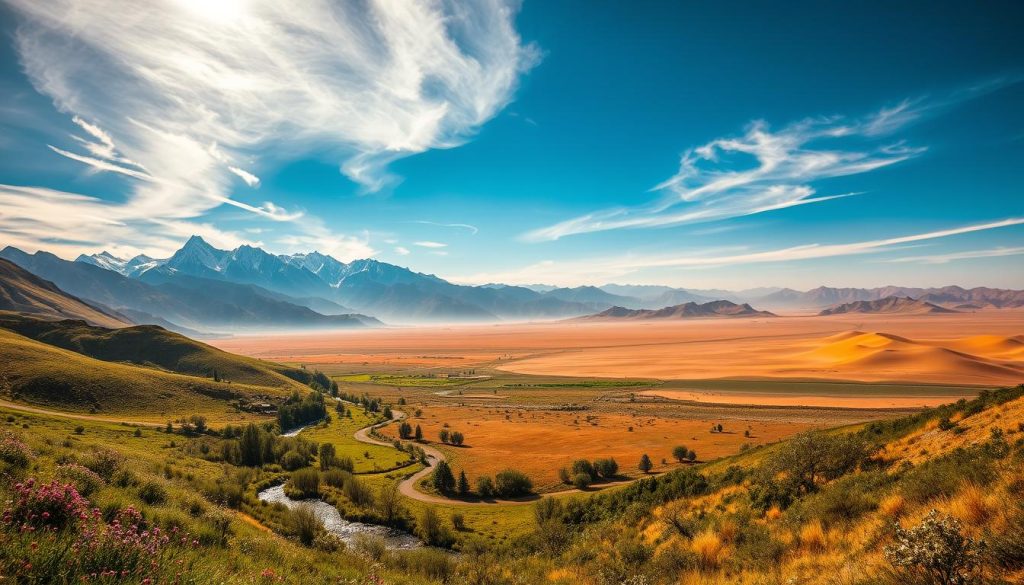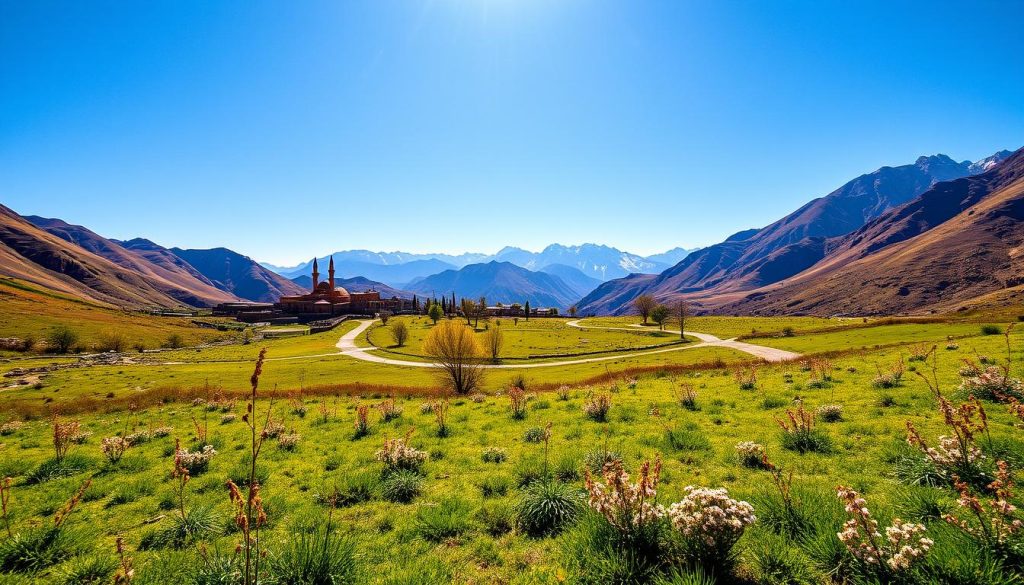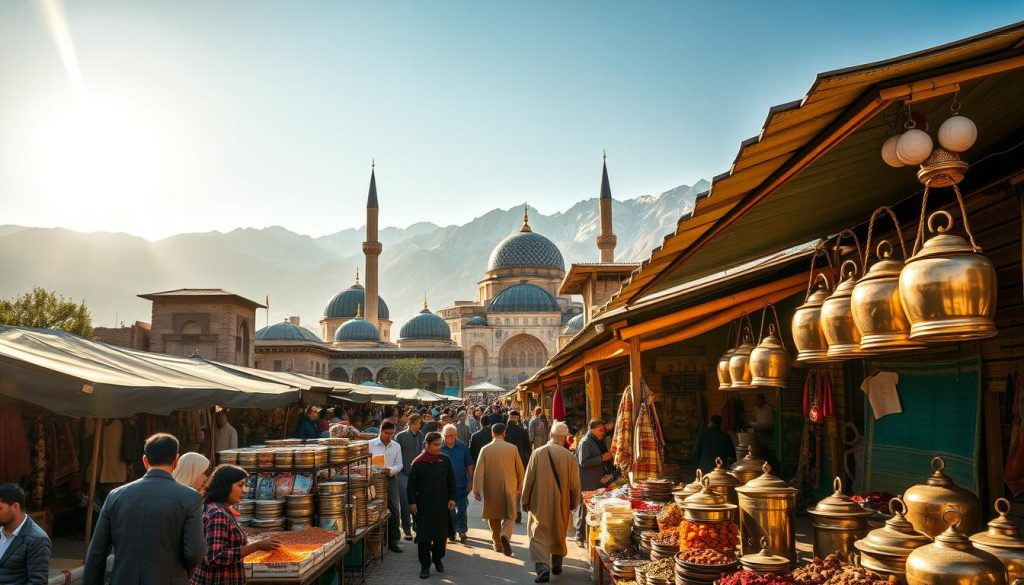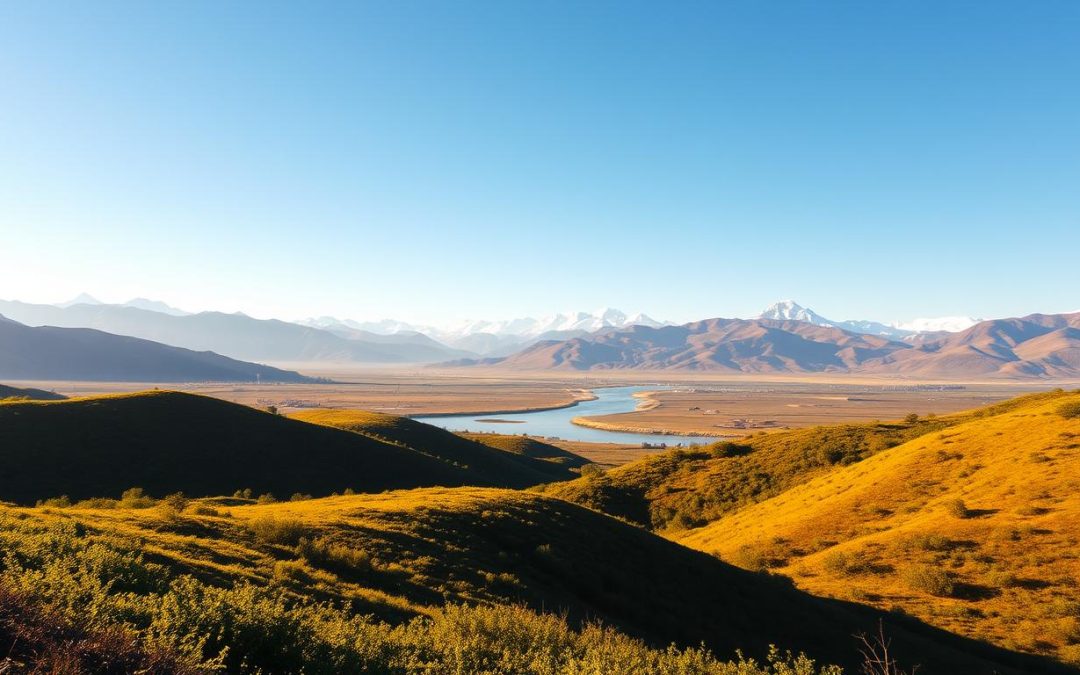Have you ever wondered how a single country can offer such extreme weather contrasts? From scorching heat in the lowlands to freezing cold in the mountains, this place is a land of dramatic shifts. Understanding its climate is key to planning a comfortable journey.
This country boasts diverse landscapes, from towering peaks to arid deserts. Summers can bring temperatures soaring above 35°C, while winters in the highlands can drop to -20°C. Such variations make timing your visit crucial for an enjoyable experience.
Whether you’re exploring bustling cities or serene valleys, knowing the right season matters. This guide will help you navigate the best times to visit, ensuring you make the most of your trip.
Key Takeaways
- Afghanistan’s weather varies greatly by region and season.
- Summers are hot in lowland areas, often exceeding 35°C.
- Winters in mountainous regions can be bitterly cold, dropping to -20°C.
- Timing your visit is essential for comfortable travel.
- Spring and autumn are ideal for mild weather and scenic beauty.
Understanding Afghanistan’s Diverse Climate
Afghanistan’s climate is as diverse as its landscapes, offering everything from scorching deserts to icy peaks. This country experiences a continental climate, meaning it has hot, dry summers and cold, harsh winters. These extremes make timing your visit crucial for a comfortable experience.

Continental Climate and Seasonal Variations
Due to its landlocked position, Afghanistan faces significant temperature swings. Summers in lowland areas can exceed 35°C, making it a challenging time for outdoor activities. In contrast, winters in the mountain regions can drop to -20°C, creating a frosty wonderland for those prepared for the cold.
Seasonal changes are dramatic here. Spring and autumn bring milder weather, making them ideal for exploring. Rainfall is scarce, but higher altitudes receive more precipitation, often in the form of snow.
Regional Weather Differences and Altitude Effects
Altitude plays a major role in shaping the climate. Cities like Kabul, situated at higher elevations, enjoy cooler summers and colder winters compared to lower areas. Herat, in the west, experiences a more arid climate with less rain.
In Bamiyan, the remnants of the ancient Buddhas stand as a testament to the region’s rich history. The cooler temperatures here make it a pleasant destination during the warmer months. Understanding these regional differences ensures you pack appropriately and plan your itinerary wisely.
Whether you’re trekking through the mountains or exploring historical sites, knowing the weather patterns will help you make the most of your time in this fascinating country.
Afghanistan: Best Months for a Weather-Savvy Trip
Choosing the right time to visit can make all the difference in your travel experience. The country offers distinct seasons, each with its own charm and challenges. Understanding these patterns ensures you enjoy your trip to the fullest.
Spring and Autumn: When Nature Thrives
Spring, from March to May, is a magical time to explore. Temperatures range between 10°C to 25°C, creating perfect conditions for outdoor adventures. Valleys come alive with blooming wildflowers, and the landscapes are lush and vibrant.
Autumn, from September to November, is equally enchanting. Clear skies and comfortable temperatures around 15°C to 25°C make it ideal for cultural exploration. This is the best time to visit historical sites without the summer heat or winter chill.

Summer and Winter: Exploring High-Altitude and Southern Regions
Summer can be intense in lowland areas, with temperatures often exceeding 35°C. However, high-altitude regions like Bamiyan offer cooler escapes. These areas are perfect for trekking and enjoying the scenic beauty without the scorching heat.
Winter, from December to February, brings colder weather, especially in the mountain regions. Temperatures can drop to -20°C, but this season offers unique experiences like skiing and local festivities such as Buzkashi games. Packing warm clothing is essential for a comfortable trip.
Each season has its own appeal, so choose the one that aligns with your interests and comfort level. Whether you’re drawn to the vibrant colors of spring or the crisp air of winter, this country has something for everyone.
Planning Your Weather-Savvy Trip to Afghanistan
Planning a trip to this diverse region requires careful preparation to handle its unpredictable weather. From hot days to chilly nights, the climate can shift dramatically, especially in mountain areas. Packing smart and staying flexible are key to a smooth journey.
Practical Packing Tips and Itinerary Flexibility
When packing, think layers. Days can be warm, but nights often turn cold, especially in higher altitudes. Bring lightweight clothing for daytime and warm jackets for evenings. Don’t forget sturdy shoes for exploring rugged terrains.
Check local forecasts for regions like Kabul or the Wakhan Corridor. Weather can vary significantly, so staying informed helps you adjust plans. In winter, roads may close due to snow, so build extra time into your schedule.

Local Insights, Safety, and Seasonal Events
Engaging with local guides can provide real-time updates on safety and weather. They also know about seasonal events, like the Nowruz festival in March, which adds cultural richness to your trip. Always prioritize safety by avoiding high-risk areas.
Seasonal festivities often coincide with the best times to visit. For example, April and October offer mild weather, making them ideal for exploring. These months also see fewer disruptions from precipitation.
Leveraging Cultural and Historical Attractions
This country is rich in history and culture. Visit ancient sites like the Bamiyan Buddhas or the National Museum in Kabul. These attractions are best enjoyed during mild weather, so plan accordingly.
Balancing comfort with adventure is essential. Whether you’re trekking through the mountains or exploring bustling cities, knowing the weather patterns ensures a memorable experience. Take your time to soak in the beauty of this unique place.
Conclusion
Timing your journey here can unlock the beauty of its ever-changing seasons. This country offers a unique blend of climates, from warm days in the valleys to chilly nights in the mountain regions. Spring and autumn stand out as the most appealing times to visit, with mild temperatures and vibrant landscapes.
Packing smart and staying flexible are essential. Check local forecasts, especially in areas like Kabul, where weather can shift quickly. Whether you’re exploring historical sites or natural wonders, understanding the seasonal differences ensures a smooth trip.
From the blooming valleys of spring to the crisp air of autumn, this place invites you to discover its cultural and natural riches. Plan wisely, and your adventure here will be unforgettable.
The above is subject to change.
Check back often to TRAVEL.COM for the latest travel tips and deals.
Here are some Tours & Sightseeing suggestions that might pique your interests!
